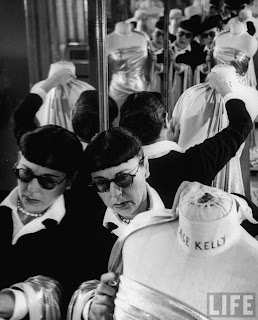The Movie
Come buckle the swash with Maureen O'Hara, Tyrone Power and a cast of hundreds in glorious Technicolor! The Black Swan (1942, directed by Rafael Sabatini) is a completely enjoyable movie in the historical extravaganza mode and an Oscar-winner for best cinematography.
Tyrone Power plays Jaime Waring, associate of the dread pirate Captain Henry Morgan, who is soon to be hanged in England. The early film sees Henry Morgan's fortunes turn with a pardon, knighthood and a post as governor of Jamaica. Peace has been drawn up between Spain and England, and Sir Henry returns to Jamaica to recruit supporters from amongst his former privateer cronies. Waring and his buddy Tommy Blue (Thomas Mitchell) throw their lot in with Morgan, but many others including Captain Billy Leech (George Sanders) and his first mate, Wogan (Anthony Quinn) prefer the pirate's life. With hotheaded Lady Margaret Denby (Maureen O'Hara), the governor's daughter, to chase, a pirate rebellion to quell and treachery in the new administration, Waring has his hands full...
Spanish Main
The Spanish Empire began in 1492 with Christobal Colon's landing in the New World. By the early1600s, the Empire extended in the New World from California to the Gulf Coast of the United States including Florida, down through Central America and the Caribbean into South America to the mid-point of modern-day Chile and Argentina and east to Brazil. From these areas, the Spanish would export a great wealth of natural resources, primarily silver and gold, in yearly convoys known as the 'Treasure Fleet'. The typical amount of each shipment was 25 million pesos, which was two times more revenue than accrued to the British crown in a single year. The Spanish would guard their fleet with warships, but with such rich cargo, this was not enough to deter piracy. Mainland Atlantic ports of the Empire were the ultimate departure points for the Treasure Fleet, but to reach the open Atlantic, the ships had to navigate their way through the Spanish Main, the area encompassing the Gulf of Mexico and Caribbean islands south and east to the boundary of modern-day Brazil. The many islands of the Caribbean provided shelter for ships seeking to attack the fleet.
Piracy on the Main
 Pirates of the Spanish Main were certainly out to make a profit for themselves at the expense of other vessels, but in many cases, they served another master as well. Privateers, ships and crews commissioned by the leaders of other seafaring nations such as England, the Netherlands and Portugal, were sent in times of war to capture enemy vessels. With a letter of marque and reprisal, ships captains could attack and capture enemy vessels. Because the crew and captain would earn a slice of the take, it was in their best interest to choose the richest targets. Actual pirates were commissioned by no nation and were in business strictly for themselves. As noted in this BBC article, the conditions on board pirate ships were often much more egalitarian and democratic then on privateers. Captains were elected by the crew and were selected for showing real skill, whereas the privateers were often commanded by members of the nation's upper-crust, whether or not they had real seafaring skill.
Pirates of the Spanish Main were certainly out to make a profit for themselves at the expense of other vessels, but in many cases, they served another master as well. Privateers, ships and crews commissioned by the leaders of other seafaring nations such as England, the Netherlands and Portugal, were sent in times of war to capture enemy vessels. With a letter of marque and reprisal, ships captains could attack and capture enemy vessels. Because the crew and captain would earn a slice of the take, it was in their best interest to choose the richest targets. Actual pirates were commissioned by no nation and were in business strictly for themselves. As noted in this BBC article, the conditions on board pirate ships were often much more egalitarian and democratic then on privateers. Captains were elected by the crew and were selected for showing real skill, whereas the privateers were often commanded by members of the nation's upper-crust, whether or not they had real seafaring skill. |
| Hands off me, you brute! |
Henry Morgan
 |
| Laird Creager as Morgan |
Links and Sources
Reefs, Wrecks and Rascals, Mel Fisher Maritime Museum
Pirates of the Spanish Main, BBC
Brethren of the Coast, Wikipedia
Henry Morgan, Wikipedia
Piracy in the Caribbean, Wikipedia
Spanish Empire, History World















































